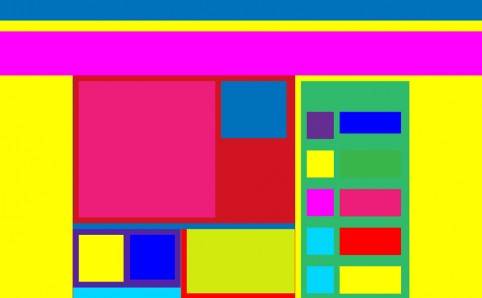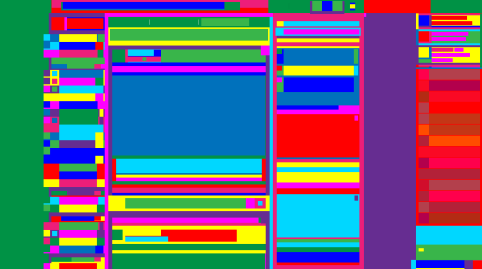Liz Stinson, Wired.com, April 2, 2015

Stripped down, websites are little more than a bunch of rectangles. Sure, there are words and pictures and videos and ads, but take all that stuff away and you’re left with something like this:
This crazy disco party of an image is, in fact, a very popular website. It’s Facebook—as seen through Abstract Browser, a Chrome extension by artist Rafael Rozendaal that transforms websites into candy-colored, geometric art.
With the extension, every part of a web page is randomly assigned one of 12 colors. Rozendaal, best known for single serving websites that turn the internet into an artistic playground, developed it using code by Reiner Feijen. The colors effectively replace the text, tables, photo and video you’d usually see. Purged of content, you’re left with the site’s underlying architecture. It offers a unique view of the now-familiar web.
The tool confirms some things you’ve probably thought at some point: BuzzFeed is a tornado of content. Microsoft Outlook is dauntingly complex. YouTube really is so much uglier than Vimeo.
But while most of us will find Abstract Browser a clever distraction from our daily internet grind, it’s a research tool for Rozendaal. Each day, he screenshots a few websites with the idea of turning the patterns into jacquard tapestries. As it turns out, the internet, with its unique forms, can be a rich source of visual inspiration. “Really what I’m looking for are compositions that abstract painters never thought of,” he says. “Compositions that we would not have consciously come up with.”


